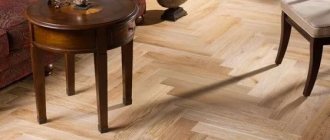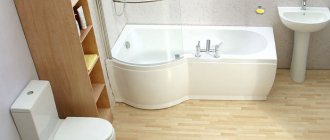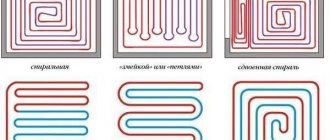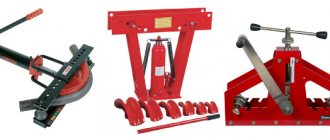The construction and repair of buildings is unthinkable without the use of concrete mixtures, cement and lime mortars, leveling screeds, adhesives, putties and grouts made by thoroughly mixing various binders and fillers with water until completely homogeneous. A significant part of them has to be prepared on construction sites in small quantities. Some compositions require mixing during their production to maintain their homogeneity, mobility and plasticity. Carrying out this work the old fashioned way, with a shovel in a trough, is long, difficult, ineffective, and in the presence of complex special compositions that require especially thorough mixing, it is simply unrealistic. Here you cannot do without such a useful means of small-scale mechanization as a construction mixer. The editors of the YaNashla website bring to your attention a review of “The Best Construction Mixers for 2021,” based on customer reviews and expert opinions.
Scope of application of hand mixer
During the construction process, at one stage or another, the need to prepare a mixture necessarily arises. The use of a special tool will ensure uniformity of the mass, which will have a positive effect on the quality of the work performed. The use of a hand mixer for concrete and other mixtures used in finishing and construction work significantly increases labor productivity.
The operating principle and design of the tool are similar to a conventional drill. The main difference between a mixer is the presence of a variety of attachments, the specifics of which differ depending on the goals set. The type of tool required is determined by the volume of work performed.
The scope of application of the mixer is finishing and construction work. And if you cannot do without a concrete mixer for mixing concrete compositions, then a hand mixer is ideal for preparing concrete, paint and other liquid mixtures.
Despite the fact that this tool is characterized by its simple design, it is easy to use, which allows you to quickly and efficiently prepare a variety of construction mixtures.
For liquid mixtures, it is better to use a hand concrete mixer
Variety of hand tools
Models of hand-held devices vary depending on the tasks they are intended to perform and the volume of work. So, to use a mixer at home, when you plan to perform a small amount of work, it is recommended to use a tool whose power does not exceed thousands of watts.
For larger-scale finishing or construction work, the best option would be to use a tool with a power of more than 1 kW.
Depending on the type of mixtures, as well as the required density of the mixture, different attachments may be needed. The optimal solution would be to purchase a tool that can operate at different shaft rotation speeds. A wide variety of models and attachments allows you to choose the most suitable tool for solving specific problems.
Types of nozzles and their features
The variety of appearance of mixer attachments is due to the huge selection of building mixtures that need to be mixed. To achieve the most effective mixing, it is necessary to select the appropriate nozzle for each construction mixture.
Such equipment can be classified according to the scope of work
There are the following types of nozzles:
- Screw. For mixing paints and varnishes. The special design of the tool allows for the most thorough mixing and prevents splashing.
- Cross-shaped. For mixing glue, sealant, potting mixtures. The specific design prevents unwanted air from entering the batch.
- Spiral-shaped. Depending on the direction of the spiral, it is suitable for mixing elastic, light or viscous, dense mixtures.
In addition to the difference in shape, the attachments for the construction mixer also differ in the method of fixation:
- screwing into the mixer hole;
- fixation with a clamp in the mixer cartridge;
- use of a fixing element.
The diameter of the whisk is up to 16 cm, the length, depending on the model, ranges from 40 to 60 cm. If necessary, you can use an extension, the length of which does not exceed 40 cm. Selecting an attachment that matches the type of mixture will ensure the highest quality and thorough mixing.
Types of augers by blade type
The composition of the solution, its volume and consistency require a whisk of a certain shape for mixing, so it is important to choose the right model.
1. Spiral nozzle (whisk).
This is the most common type. It is a long rod with several spiral turns and a protective ring at the end. They are right- and left-handed. In the first case, the spiral is twisted clockwise, in the second - counterclockwise.
The right-hand ones are designed for preparing thick cement and plaster mixtures. In such solutions, heavy particles settle down, and a spiral moving clockwise lifts them to the top, giving the composition a uniform consistency.
To mix substances with a low degree of viscosity: liquid putties, paints and varnishes, a left-hand whisk is required. The spiral rotates counterclockwise and lowers the solution down, preventing it from splashing.
If the mixer is equipped with a reverse function, then you can get by with one type of auger.
2. Corolla with straight blades.
It mixes the compositions only in a horizontal plane, perfectly removes existing air bubbles from them and prevents the formation of new ones. It is used to produce mixtures based on gypsum, polymer resins, sealants, and adhesives. Excess air in such materials leads to their loss of their performance properties.
3. Screw-shaped nozzle (whisk).
It is a corolla with oppositely directed blades. It is used for mixing very light liquid solutions, most often varnishes and paints. There are models with two screws on the rod. The lower one lifts the components and mixes them, the upper one presses the solution and prevents splashing.
4. For the preparation of concrete, sand-gravel mixtures, bitumen and other high-density materials, special-purpose nozzles that are particularly durable are used.
The diameter of the corolla ranges from 80 to 160 mm. The standard length of the auger is 40 and 60 cm. If it is not enough, additional rods are used. The total length of the whisk can reach up to 1 m. This auger can mix solutions in containers up to 200 liters.
Features of choosing a construction mixer for concrete
Before you begin to consider the most popular models, during the purchasing process you need to decide on the scope of work and the type of mixtures required. And if to mix paint before painting the walls in an apartment you can get by with a drill with a special attachment, then to mix concrete solutions and perform large volumes of work you will need a construction mixer.
One of the main characteristics that influence the choice of mixer is the density of the mixture.
In the process of choosing the optimal model, it is necessary to consider a number of key factors:
- Tool power. In order to use the device at home to perform a small amount of work, a tool with a power of up to 1 kW will be sufficient. It is impossible to do without professional equipment with a power of more than 1 kW when carrying out large-scale construction work.
- The presence of a regulator to change the rotation speed. The ability to change the rotation speed will allow you to use the tool not only for mixing concrete mixtures, but also for mixing lighter structures, such as paint and varnish.
- Great torque. One of the main parameters that allows you to cope with even the most viscous mixtures.
- A convenient fixing element that would not make dismantling difficult, even with intense contamination with mixtures.
- Depending on the volume of planned work, it is necessary to choose a model with one or two mixers (for large volumes of work).
- Comfortable handle of the tool. The shape should fit comfortably in the hands and provide high maneuverability to the tool.
Special attention must be paid to the tool manufacturer, choosing one who guarantees exceptionally high quality products.
To prepare a concrete solution, you will need to use a special mixing tool.
Comparison table of characteristics
Based on the rating presented earlier, we have organized a table containing the main technical parameters of all the models described. With its help, you can easily compare and identify the best construction mixer based on the main characteristics of the work.
| Model name | Power indicator (W) | Weight, kg) | Maximum number of revolutions (rpm) | Power cable length (m) | Cost (rubles) |
| Fiolent MD1-11E 1100 W | 1100 | 4.7 | 600 | 1.9 | 4 000 — 5 000 |
| CALIBER ERM-1600/2E 1600 W | 1600 | 6 | 900 | 2 | 4 000 — 5 500 |
| Interskol KM-60/1000E 1050 W | 1050 | 4.6 | 850 | 2.5 | 5 700 — 8 200 |
| Hitachi UM12VST 1100W | 1100 | 5.4 | 650 | 2 | 5 000 — 6 500 |
| Engy EEM-1010 1010 W | 1010 | 4.6 | 650 | 1.5 | 3 000 — 4 000 |
| Bort BPM-1400×2 1400 W | 1400 | 8.52 | 600 | 1.8 | 9 000 — 11 000 |
| Makita UT1401 1400 V | 1300 | 6.68 | 650 | 2.5 | 19 000 — 20 000 |
Basic information about hand mixers
The manual device is an ergonomic alternative to a drum-type concrete mixer. There are two options for the tool:
- Hand construction mixer. The main differences between the models on the market are the power of the tool, the number of attachments, and ergonomics. The tool is designed for mixing concrete and other building mixtures.
- Drill with the ability to install a whisk. The use of the tool is relevant when it is necessary to knead a small amount of liquid mixtures: paints, varnishes, glue.
Prolonged use of the drill, especially when mixing denser mixtures such as concrete, can lead to overheating and failure of the tool.
How to choose a whisk attachment
Choosing a nozzle for a construction mixer does not present any difficulties if you know how to understand all the intricacies of construction work. First of all, you should remember that the material of the nozzle is a simple marketing ploy from the manufacturers. Its quality and resistance to damage are not always key parameters when choosing. An important parameter is the presence of abrasive properties. Whisks made from budget materials quickly wear out and lose their properties. Since the devices are used in certain seasons, it is not recommended to buy an expensive attachment, since during inactivity it will become damp, rust and cease to be effective in operation.
Hand Mixer Power
The main characteristic that you need to pay attention to when choosing a tool is its power. To perform a small amount of construction work, when it is necessary to mix varnish, paint or a small amount of putty, the optimal solution would be to use a tool with a power of up to 1000 W.
If you need to mix a large amount of putty, concrete mixtures or viscous adhesives, you cannot do without a more powerful tool.
Another important characteristic is the shaft rotation speed
Nozzle design
The standard length is 400-600 mm (Ǿ 160 mm), if necessary there is a 400 mm extension, which is sufficient for 200 l containers.
Select nozzles according to the type of solution that will need to be mixed:
- Right-handed spirals are needed for mixing viscous solutions (cement, plaster, tile adhesive, etc.).
- Left-handed spirals - used in elastic mixtures (various paints, varnishes, or bitumens).
These nozzles have a bottom ring; it must be lowered all the way to the bottom of the container. The screw attachment with 2 screws is used for mixing paints or varnishes. The screws work in different directions, so the quality is good, the mixture does not splash. The cross is used for mixtures where air is not desired.
There are specialized attachments: for sand, cement mortars that have greater resistance.
Tool efficiency
In addition to the obvious factor affecting the efficiency of the tool - the voltage in the electrical network, one of the main criteria is torque and speed.
Depending on the type of construction mixture, the best mixing can be achieved at high or low speeds. Thus, to knead a viscous substance, high torque and low speeds will be required, and to prepare a homogeneous paint or varnish mixture, high speeds will be the optimal solution.
In order to achieve high-quality and uniform mixing, it is necessary to give preference to models whose functions provide for changing the rotation speed.
Main settings
Along with the main technical features, when purchasing a hand tool, it is important to take into account the main parameters of the device, namely:
- weight – 1.5–5.0 kg;
- noise is an indicator whose intensity is determined by the power of the device - the greater the power, the higher the noise level;
- Dimensions (in cm): length – 30–50, width – 25–35, height – 15.
A wide variety of models allows you to purchase the most suitable and convenient option for each occasion.
It is better if the high-density solution is mixed with a mixer with high torque
Shank type
Here more attention is required, since according to the type of rim shank there are:
- Cylindrical,
- Hexagonal,
- M14,
- SDL-Plus.
Look at the connector on the hammer drill or drill and select the shank type from here. For Bosch rotary hammers, SDL-Plus shanks are suitable, which have 4 grooves - 2 open and two closed. For drills, cylindrical shanks are suitable, less often hexagonal ones. When choosing a hex shank, keep in mind that the diameter of the mixer will be equal to the diameter of the drill.
When purchasing, it’s easier to tell the seller which hammer or drill you will use for kneading, and he will select an attachment with the right type of shank for you.
Parameter importance ★★★★★.
Manufacturers
The market offers a wide selection of not only powerful professional equipment, but also small hand-held devices. The production of hand tools is equally carried out by both regional enterprises and companies known throughout the world. At the same time, the range of both the first and the second is distinguished by high quality and convenience.
The most popular manufacturers are:
- "Interskol";
- SKIL;
- REBIR;
- Makita;
- "ZUBR";
- Elitech;
- BOSCH.
All manufacturers guarantee the reliability of the products they produce. Therefore, when purchasing a tool from popular brands, you can be sure that this equipment, subject to adequate operation, will last for a long time.
Rating of the best models
Despite the relatively wide variety of construction mixers, choosing is often difficult. A potential buyer may be confused by the price, appearance, features of application, reputation of the company and a number of other factors.
Hand mixers for concrete and high-power devices are sold on the modern market in a huge range
The most popular options with optimal price-quality ratio include the following:
- Rebir EM-1450E-2. The tool, which has the shape of a two-handed drill, is ergonomic and safe to use. The presence of two speeds allows you to use the device not only for preparing concrete solutions, but also other building mixtures, paints, and varnishes. The diameter of the corolla is one hundred and twenty millimeters. Blend volume up to sixty-five liters.
- "Interskol KM-60/1000E". Ideal for mixing various building mixtures. The two-speed mode ensures thorough mixing of batches of varying densities. The two-handed model is equipped with additional hand protection. The diameter of the corolla is one hundred and sixty millimeters.
- Elitech MS 1600/2ED. A special feature of the model is the presence of two mixing whisks. Despite the little-known manufacturer, the tool is of high quality, convenience and reliability. The two-speed mode ensures uniform mixing of various building mixtures.
To purchase a guaranteed high-quality and reliable tool, you need to read consumer reviews and the opinions of professionals who have repeatedly encountered such equipment.
Types of attachments by mounting method
The shape of the shank determines which tool this auger can be mounted on. Some models can only be installed on professional mixers. Other attachments are also suitable for household drills and rotary hammers. The following types of shanks are distinguished:
- standard hexagon 8.9 and 10 mm - universal type. Installed in high power mixers and drills equipped with a jaw chuck;
- hexagon 8, 10, 12 mm, equipped with a groove for spring fastening. It can be used in both HEX and clamp chucks;
- threaded shanks M 12, M 14 provide the most reliable connection, withstanding high loads and high torque. However, they are installed exclusively on professional, highly specialized mixers;
- shanks for SDS-plus chucks are attached only to high- and medium-power hammer drills;
- Morse taper is used for fastening industrial screws, providing fast, accurate centering and reliable fastening.
Conclusion
Regardless of the scale of construction or repair work, performing such work requires the application of great physical effort. To facilitate the task of workers at various stages of construction or repair, leading companies produce a variety of high-quality equipment. One of the most popular tools in construction practice is a construction mixer.
The use of hand tools in construction and repair work will ensure uniformity of the batch, which will certainly affect the efficiency and quality of the work.
A wide range of hand mixers on the market allows you to choose the most suitable tool for solving specific problems - mixing concrete, paint, varnish, glue and other building mixtures. Consulting a specialist will help you make the most informed choice and purchase not only a high-quality, but also a convenient, affordable tool.











